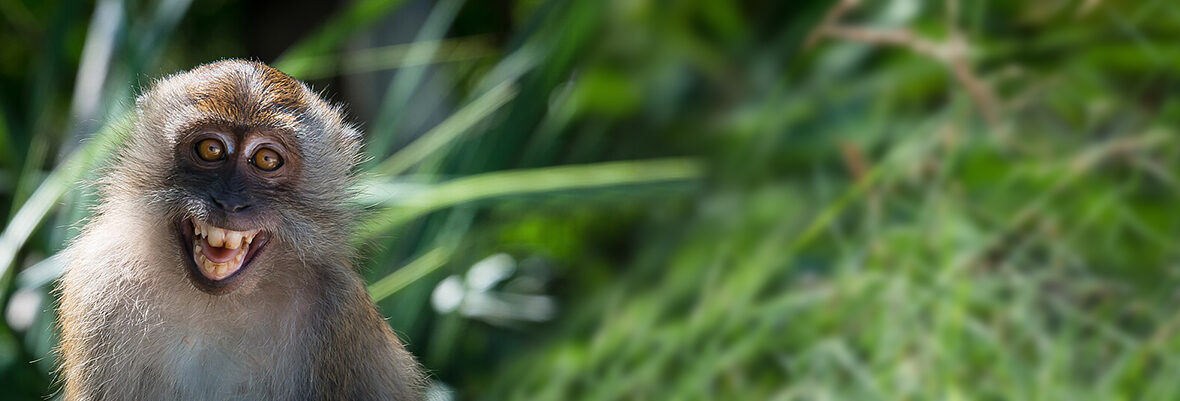
The crab-eating macaque, aka long-tailed macaque, Java monkey, or cynomolgus monkey, is found throughout southeastern Asian and Australasia. They tolerate a range of habitats such as primary lowland rainforests, disturbed areas, riverine habitats, secondary rainforests, shrublands, forest periphery, coastal nipa palm forests, mangroves, and sometimes even human settlements. These primates face many threats like habitat loss and destruction at the hands of residential and commercial developments, farming, ranching, logging, energy production, mining, roads, & railroads (which can result in habitat division and vehicle strike – being hit by vehicles); hunting; trapping; recreational activities; earthquakes; tsunamis; and climate change. The IUCN lists these creatures as Endangered. Their numbers are also decreasing.
First the Stats…
Scientific name: Macaca fascicularis
Weight: Up to 20 lbs.
Length: Up to 2.6 feet, plus up to a 25.59 inch tail
Lifespan: Up to 30 years
Now on to the Facts!
1.) These primates are viewed from several lenses: a sacred creature, an agricultural pest, and sadly as a test subject for medical experiments.
2.) They are highly social creatures that dwell in troops that consist of a dominant male and up to 20 females, including their young.
3.) Crab-eating macaques are diurnal (active during the day).
4.) Bachelor troops have a well established hierarchy that is structured upon fighting skills, size, and age.
5.) A group of primates is called a barrel, cartload, tribe, troop, or wilderness.
But wait, there’s more on the crab-eating macaque!
6.) Social grooming is utilized as a way to determine rank and status. Lower ranking females will groom higher ranking ones.
7.) They eat crabs, insects, various flowers, fruits, leaves, fungi, grasses, and occasionally clay is also consumed to obtain essential minerals.
Did you know…?
These macaques possess buccal pouches (cheek pouches, like hamsters) that they use to temporarily store food.
8.) Like many primate species, these critters are polygynous (1 male mates with multiple females). They also exhibit polygynandrous (promiscuity – multiple male/female partners are mated with).
9.) Females undergo up to a 193 day gestation (pregnancy) that yields a single infant.
10.) The infant is weaned at up to 420 days.
But wait, there’s still more on the crab-eating macaque!
11.) Crab-eating macaques are considered primary seed dispersers of the durian fruit.
12.) Communication is derived via several means, such as olfactory (body scent), body language, and vocalizations.
Did you know…?
They have been documented dipping their food into the water before eating it, presumably to clean off debris and/or dirt; thus cleansing their food.
13.) In typical macaque fashion, these primates are highly intelligent and use tools to gain access to food. They use rocks to crack open crab shells, and they use nuts and oyster shells to aid in peeling sweet potatoes.
14.) When threatened, they will often escape to the water, as they are skilled swimmers.
15.) Each troop takes up residence in a a single tree and huddles together to stay warm.
16.) Tigers, crocodiles, snakes, and large birds of prey all hunt these primates.
Now a Short Crab-Eating Macaque Video!
Be sure to share & comment below! Also, check out the Critter Science YouTube channel. Videos added regularly!
Want to suggest a critter for me to write about? Let me know here.
Some source material acquired from: Wikipedia & IUCN
Photo credit: Rushen: Thai National Parks



